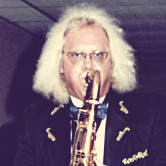Modern Saxophone Manufacturing
Stan Garber, Selmer
Foreword by Paul: Stan Garber, Marketing Manager of Band Instruments at Selmer, is our first guest columnist. Stan attends all of the trade shows and clinics… go by and meet him at the Selmer booth.
Most people don’t realize that the saxophone is really a very complex instrument, consisting of 500 parts and pieces and some 3,000 different labor operations. For example, a single key can consist of a hinge rod, cup arm, cup, lever, spatula (touch plate), and spring hook – all of which must be formed, processed, soldered, polished, lacquered, and assembled.
Within the Elkhart, Indiana factory Selmer makes nine different models of saxophones (not including models from Selmer Paris). Multiply that by the number of parts and labor operations and you begin to have an understanding of the operation’s complexity. In order to keep track of it all Selmer uses an IBM AS400 computer that records the movements of every single part.
The manufacturing process itself has even become more high tech. For example, tone hole pulling is now automated. Previously workers loaded pulling balls into a steel mandrel and slipped on the brass body tube. A specially modified drill press was manually lowered, threading into the pulling ball through a hole that was pierced into the tube. Raising the drill press pulled or extruded the metal upwards, creating the tone hole chimney. The process was repeated for each tone hole. Now a machine, loaded with several body tubes, automatically extrudes tone holes.
But computers and machinery can never replace the human element. Each Selmer saxophone is individually hand assembled. Finally, every saxophone is play tested before leaving the factory.


